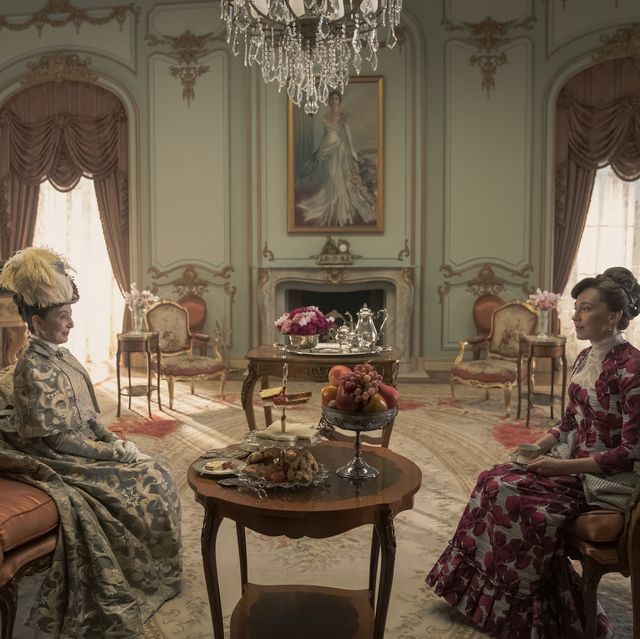Yes, the Gilded Age is based on historical events and real-life figures from the late 19th century. The popular television show is inspired by the economic and social dynamics of the era, including the rise of industrialization and the impact of wealth disparity on American society.
The Gilded Age, the period spanning from the 1870s to the 1900s, was characterized by rapid industrialization, economic growth, and profound social inequality. This era was marked by the emergence of influential tycoons, such as John D. Rockefeller and Andrew Carnegie, and the rise of monopolistic corporations that reshaped the nation’s economy.
The societal transformations during this period serve as the backdrop for the events depicted in the series, providing viewers with a glimpse into the complexities of the Gilded Age. Through its captivating storytelling, the show delves into the intertwining lives of fictional characters while weaving in elements of historically accurate events and people, offering a compelling portrayal of this transformative period in American history.
Understanding The Gilded Age
The Gilded Age is a captivating era in American history, characterized by rapid industrialization, economic prosperity, and social change. But is the Gilded Age based on a true story? Let’s delve into the historical background and socio-economic context to gain a deeper understanding of this pivotal period.
Historical Background
The Gilded Age, a term coined by Mark Twain and Charles Dudley Warner in their novel “The Gilded Age: A Tale of Today,” refers to the period following the Civil War and lasting until the early 20th century. This era witnessed a significant influx of immigrants, the expansion of industrialization, and the rise of powerful industrialists, often referred to as “robber barons.”
Socio-economic Context
During the Gilded Age, the United States experienced unprecedented economic growth and urbanization. The rapid development of industries, such as steel, oil, and railroads, propelled the nation into a new era of prosperity. However, this period was also marked by stark social inequality, labor unrest, and political corruption.
Dissecting Fact From Fiction
The Gilded Age, a popular period drama television series, has piqued the interest of many viewers, raising the recurring question of whether the show is based on a true story or is entirely a work of fiction. In this section, we will dissect the series to separate the factual elements from the fictional ones, shedding light on the inspirations and historical realities that influenced the narrative.
Literary Inspiration
The Gilded Age draws inspiration from the novel of the same name by Mark Twain and Charles Dudley Warner. The narrative encapsulates the opulence and social upheaval of the post-Civil War era, reflecting the lavish lifestyles of the wealthy elite. The authors captured the essence of the Gilded Age by intertwining real historical events with fictional characters and scenarios, infusing the storyline with authenticity while preserving room for creative liberties.
Historical Accuracy
While the series incorporates fictional characters and plotlines, it remains rooted in the socio-political landscape of the Gilded Age. The show portrays the themes of industrialization, wealth disparity, and societal transformations that characterized the era. From the burgeoning urbanization to the emergence of influential tycoons, the series strives to capture the essence of the Gilded Age, intertwining historical accuracy with dramatic storytelling to immerse the audience in a captivating depiction of the period.
Influence Of Real-life Figures
The Gilded Age, a new historical drama series, has garnered much attention for its portrayal of late 19th-century New York society. While fictional in nature, the show draws inspiration from real-life figures, weaving their stories into the narrative. This begs the question: How much of the Gilded Age is based on true events and influential personalities from history?
Key Personalities
1. Alva Vanderbilt – An influential socialite and women’s rights activist, she played a pivotal role in shaping New York’s high society during the Gilded Age.
2. Henry Frick – A prominent industrialist with a contentious reputation, his business dealings and conflicts with labor unions set the stage for the era’s economic struggles.
3. Theodore Roosevelt – A young, ambitious politician known for his progressive views, his rise to power mirrors the political landscape of the time.
Their Impact On The Narrative
These real-life figures serve as the backbone of the Gilded Age’s narrative, influencing the characters’ motivations and the overall portrayal of society. Alva Vanderbilt’s fierce determination and ambition reflect the struggles of women in a male-dominated society, while Henry Frick’s industrial prowess and controversial decisions embody the unrest and economic growth of the era. Additionally, Theodore Roosevelt’s progressive ideals and pursuit of political reform offer insight into the shifting dynamics of power and influence.

Examining Modern Interpretations
When examining modern interpretations of the Gilded Age, it becomes evident that the historical period has left a lasting impact on culture and historical understanding. To delve into its cultural relevance and implications on historical understanding, it’s important to explore the various perspectives and portrayals of the Gilded Age in contemporary media and literature.
Cultural Relevance
The Gilded Age continues to hold cultural significance as it reflects the complexities of societal structures, wealth disparities, and the pursuit of the American Dream. Modern adaptations of Gilded Age themes in literature, film, and art emphasize the enduring fascination with the glamour and excess of the era, while also shedding light on its underlying struggles and inequalities.
Implications On Historical Understanding
The modern interpretations of the Gilded Age serve as a lens through which to reevaluate our historical understanding of the era. By presenting diverse narratives and perspectives, contemporary works challenge traditional interpretations, prompting a nuanced reexamination of the social, economic, and political dynamics of the time.
Conclusion
The Gilded Age is indeed based on a true story, drawing from the rapid industrialization and social disparities of the late 19th century America. The era’s lavish surface concealed underlying problems, sparking significant changes in society and economy. Its relevance to contemporary times underscores the enduring impact of historical narratives on current societal dynamics.

